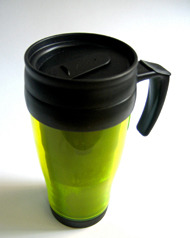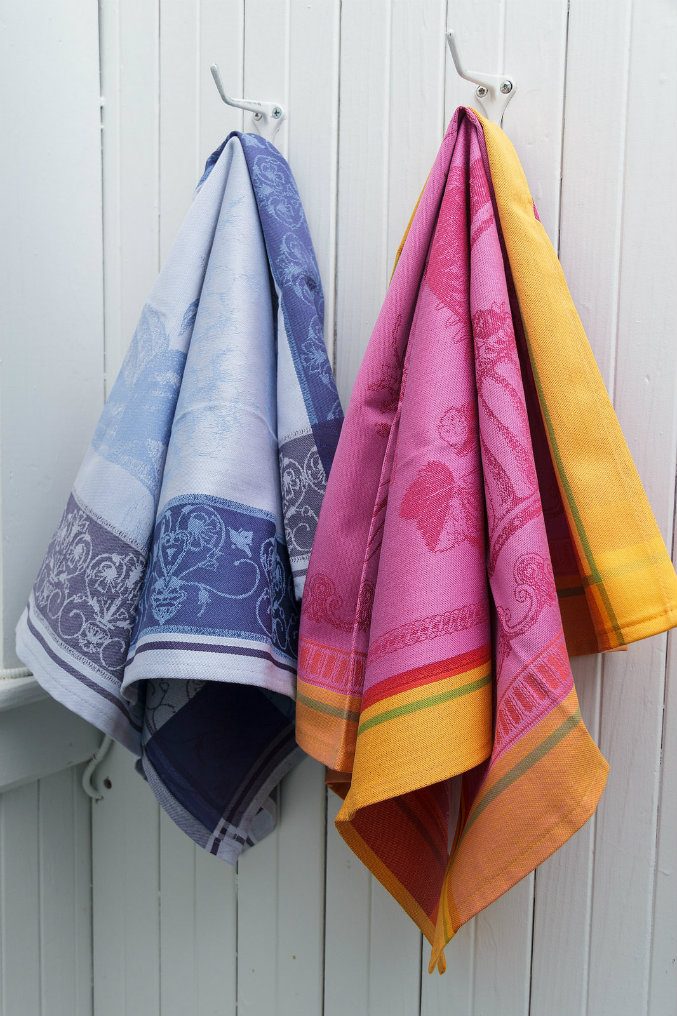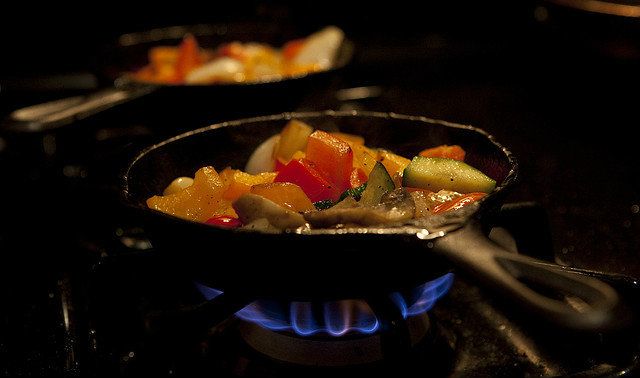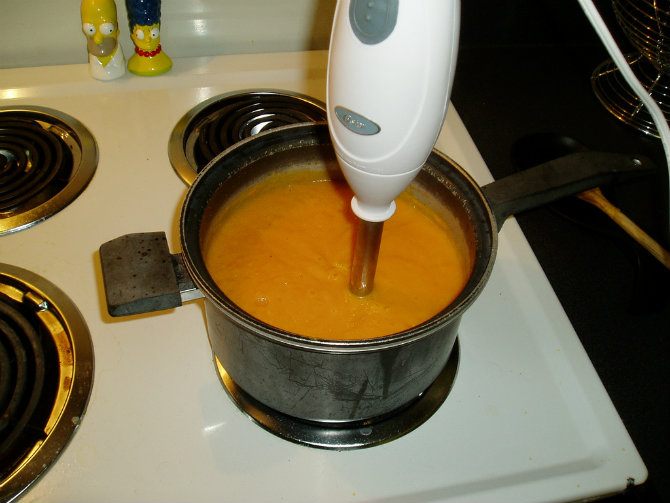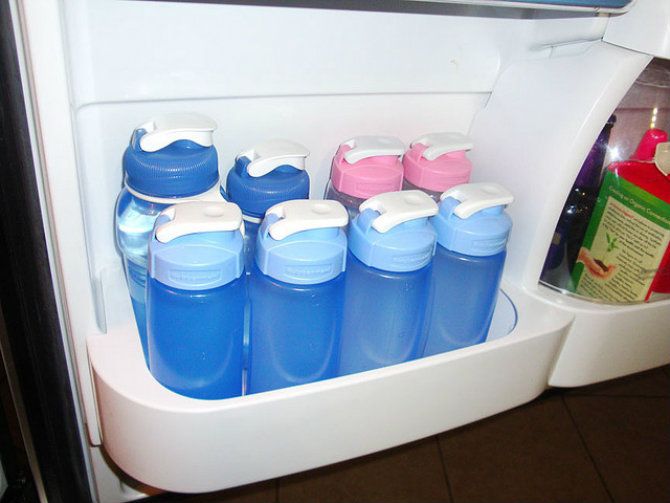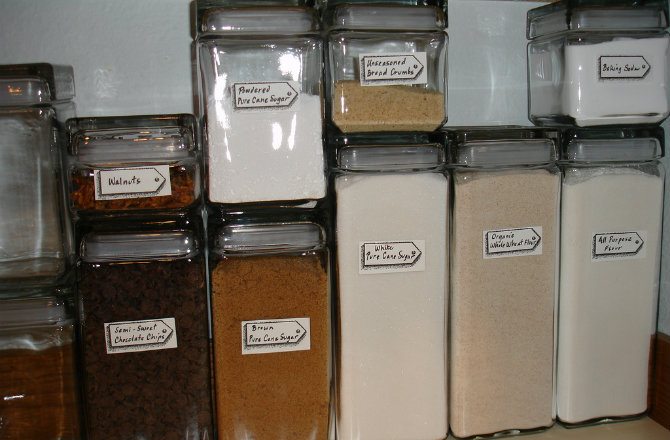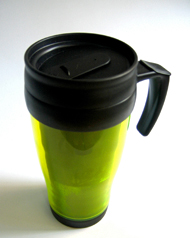10 Kitchen Tools That Will Save You Money
Cooking at home is a great way to save some money. On restaurant or takeout menus, menu prices not only factor in the cost of food, but also salaries for the cooks, servers, and managers as well as the cost of rent, utilities, and maintenance, and of course, a profit margin (however slim).
But even when cooking at home, there may be ways to save money that aren't that obvious at first. Yes, of course, one can always unplug the coffee maker, microwave, or toaster oven when they're not in use (phantom power, anyone?), and the truly desperate can even cut down trees in their backyard to build fires to cook.
Obviously, that's not practical (and may not be legal). So here are 10 kitchen tools that will save you money, encourage you to cook more, and even improve your cooking. We've figured out just how much money each tool will save, usually over a three-month period. In many cases, since these are tools, an upfront investment is required, and so the savings will really start to show as time passes (for example, with the kitchen towels).
As always, though, the devil is in the details. Here is the methodology we used in calculating the savings for each "tool":
First of all, for ease of calculation, we assumed that a three-month period was equivalent to 12 weeks.
For any comparison involving groceries, we "shopped" at FreshDirect, a regional online grocer in the tri-state area that is surprisingly competitive and roughly in line with many brick-and-mortar supermarkets in various metropolitan areas throughout the country.
For any home goods, we "shopped" at Target.com.
We are in no way sponsored by these retailers, but chose them since we believe they are generally representative of retail prices throughout the country.
And lastly, in general, whenever there were several options or brands for each item, we selected the lowest-cost option. So without further ado...
Photo: Erik Burton/CC4.0
Slow Cooker
The beauty of a slow cooker is that it's pretty much "set it and forget it." For those who are reluctant to cook, it's a boon. Just throw everything in the pot and turn it on. Even basic models costing around $45 these days have timers as well as a "keep warm" function that keeps dinner piping hot without cooking it any further. Plus, recipes using slow cookers allow for cheaper cuts of meat that become melt-in-your-mouth tender by the end of the workday. Or, make a whole batch of lovely beef stew on a Sunday night and save it to eat the rest of the week at lunch.Replace one takeout meal per weekday with one home-cooked meal.
Average weekly cost of takeout: $50
Cost of slow cooker: $45
Average weekly cost of groceries to replace one meal a day: About $25 (3 pounds beef stew meat: $16, 1/3 bottle red wine: $3, fresh herbs: $3, ½ pound carrots: $0.50, 1 pound red potatoes: $1.50, 8 ounces mushrooms: $1.50, 2 onions: $0.35, 1 head garlic: $0.75, 1 cup beef broth: $0.75)
Takeout over three months: $600
Cooking over three months: $345 (groceries + slow cooker)
Savings over three months: $255
Of course, no one is going to eat beef stew every day, but this is for illustration purposes, and we're going to make the leap that whatever goes into the slow cooker shouldn't cost much more or much less than this recipe. And your savings may be greater.
Soda Maker
Machines like the SodaStream just might make buying 12-packs of canned soda a thing of the past. Just fill one of the water bottles included with the kit using tap water, and a carbonator adds the fizz. Mix in a measured amount of the desired soda flavoring, shake gently, and enjoy. It's kinder to the wallet and the environment in the long run; imagine all those empty cans and bottles wasted every day. But with the cost of gas refills and flavoring components, does this make financial sense?
One 12-ounce can of soda each day works out to 1,008 ounces of soda over a three-month period. Let's compare how much that would cost using a soda maker versus buying 12-packs of soda at the store.
Cost of machine starter kit (comes with flavor samples good for 200 ounces of soda): $80
Cost of flavoring refills (makes 400 ounces of soda): $5
Cost of refilling carbonator cartridge (makes 2,029 ounces of soda): $15
Cost of 12-pack of soda (144 ounces total): $5
Buying seven 12-packs over three months: $35
Making equivalent amount of soda over three months: $80 + $12.60 + $7.45 (starter kit + flavoring refills + gas) = $100.05
So the machine doesn't quite pay for itself in three months, but after a little over a year, you can expect to break even.
Savings over two years: about $40
(Photo: alice henneman/CC4.0)
Plants
OK, admittedly, plants are not a tool. But, they seemed like too much of a good idea to leave off the list. If there's a fresh herb that makes its way onto the grocery list every week, it might make sense to just buy the plant. Let's take basil for example, which, with a little sun, and a little love, is probably one of the easiest to grow. Think of it as a gateway, too, for growing other herbs.
Assuming that the equivalent of one bunch of basil is picked off the plant every two weeks.
One 2-ounce bunch basil every other week (6 bunches @ $2.50 each): $15
One large basil plant: $10
Savings over three months: $5
Kitchen Towels
It may seem silly at first, but investing in a set of kitchen towels really can save money. Of course, no one sits around counting up how many paper towels get thrown in the trash, but we'll most certainly try. Seven spills per week, each requiring an average of two paper towels.
Sheets used in three months: 168
Cost of a two-ply roll of paper towels, 48 sheets: $2
Rolls of paper towel needed over three months: 3 ½
Cost of paper towels over three months: $7
Set of four kitchen towels: $10
So it doesn't make much sense over a period of three months, but over the period of a year, using kitchen towels will amount to $18 in savings. And like any investment, there's an upfront cost that diminishes over time. Kitchen towels are usually fairly durable, so any depreciation is probably negligible.
Savings over one year: $18
SilpatThis is along the same lines as the kitchen towels. How many countless pieces of parchment paper have been thrown away after baking a batch of cookies? Probably too many. And like everything else, that adds up.
Cost of 11-by-16-inch silpat: $25
41 square feet of parchment paper: $6
Bake once a week, using about 14 square feet of paper. Over three months, this would mean about 168 square feet of paper, or about $25 worth.
This one breaks even, but over the course of a year, the savings would be about $75.
Savings over one year: $75
(Photo: soeullfully/CC4.0)
Cast-Iron Pan
A quality cast-iron skillet is a great investment. It's a durable tool that can be passed down through the generations. Forget about cheap, nonstick pans that end up scratched after a year. This is the real deal.
Cost of 10-inch cast-iron skillet: $20
Cost of 10-inch nonstick pan: $20
This one breaks even, too, but we're willing to bet that the Mayan calendar will end before the cast-iron skillet will give out. Oh wait...
Savings over three years (assuming replacement of nonstick pan each year): $40
Click here to see 5 Myths About Cast-Iron.
(Photo: Joel Kramer/CC4.0)
Three-in-One Immersion Blender
We're huge fans of multitaskers here at The Daily Meal, and by that we mean tools that can be used for several different purposes. In that frame of mind, may we suggest a three-in-one immersion blender. It's an immersion blender, chopper, whisk, and/or electric knife all in one. How can anyone refuse?
Cost of three-in-one immersion blender: $32
Cost of regular immersion blender: $30
Cost of whisk: $5
Cost of electric knife: $13
Cost of chopper: $20
One-time savings: $36
(Photo: rubbermaid products/CC4.0)
Water Filter and Reusable Bottle
It's not just good for the environment; it's good for the pocketbook, too. Invest in a water filtration system (a fancy way of saying a pitcher with a water filter), and even with the cost of replacement cartridges, it's easy to see that the savings add up. Even just after three months.
Assume the filter lasts three months before replacement, and you're drinking the recommended eight cups of water a day.
Cost of water filter and pitcher: $20
Cost of reusable water bottle: $10
Cost of 48 eight-ounce bottles: $15
64 ounces of water per day for three months: 5,376 ounces
Cost of bottled water for three months: $210
Savings over three months: $180
Photo (Kitchen Organization): melissaadoroquez/CC4.0
Canisters
Who doesn't love cereal? It's pretty much de facto Saturday morning fare for the 12-and-under crowd (although, that age limit isn't hard and fast, especially when Cocoa Pebbles are involved) and it's a quick and easy breakfast food every other day of the week. But leaving it in the box means it'll taste like cardboard after a few weeks, and be totally stale after a few months. And canisters aren't just for cereal, either; store whole coffee beans, pasta, and other perishable dried goods. Yes, even dried goods have a shelf life. And yes, as you'll see from our calculations, these hold a lot of cereal.
Keeping this one simple folks. Assuming boxes of half-eaten, open boxes of cereal get thrown out every three months, here's how much would be saved on leading brands.
Cost of seven-piece ceramic canister set (160-ounce total capacity): $20
Cost of one 16-ounce box cereal: $5
Boxes of cereal that can fit in canister set: 10
Equivalent cost of cereal: $50
Savings over three months: $30
Going out for coffee sure is convenient, but it's a bit of a luxury, especially in light of the savings from brewing at home. These prices roughly compare the cost of a 16-ounce cup of coffee at Starbucks versus brewing at home using their medium-roast house blend. We say roughly since prices vary by location — ever tried to buy some just before getting on a plane? The prices are sky-high (sorry, we couldn't help it). But, even with the upfront cost of a cheap coffeemaker and mug, the contrast is pretty much night and day. (Photo courtesy of Stock.XCHNG/xenxen)
Cost of coffeemaker: $25
Cost of 16-ounce insulated travel mug: $25
Cost of coffee grounds: $11.95 per 16 ounces
Cost of brewing 16-ounce cup of coffee: 2 ¾ tablespoons coffee grounds (0.97 ounces) = $0.72
Brewing coffee over three months: $110.48
Cost of purchasing 16-ounce cup of coffee: $2
Going out for coffee over three months: $168
Savings over three months: $57.52
